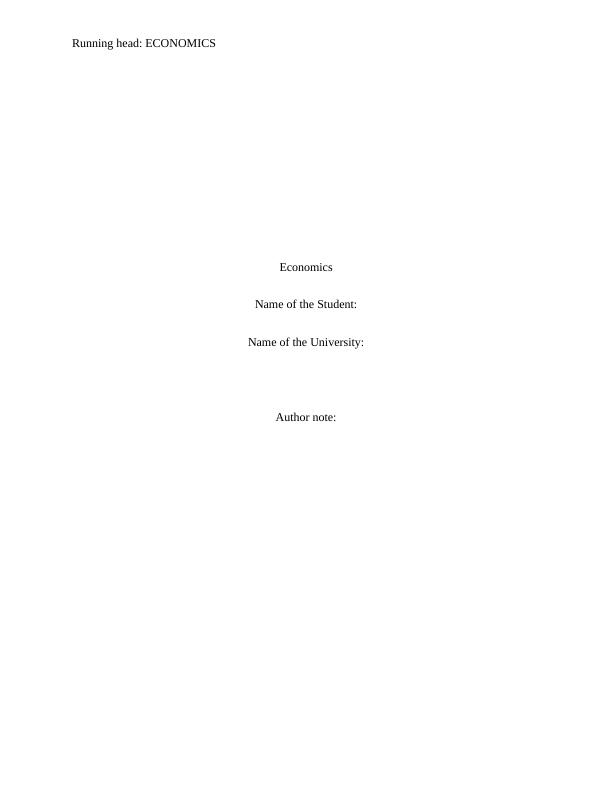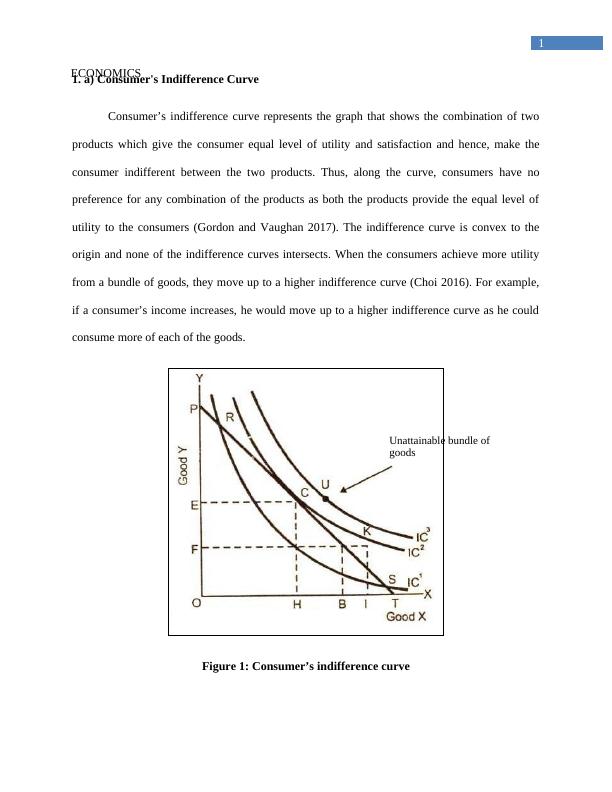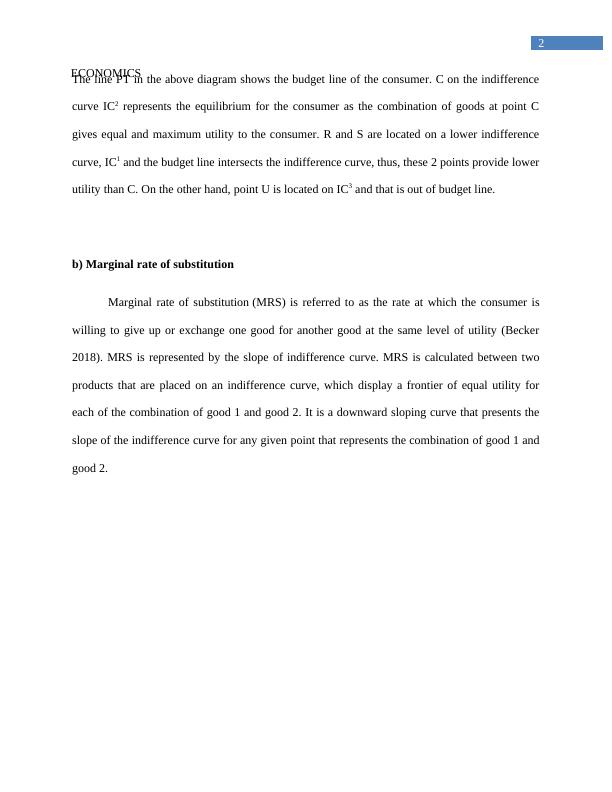Consumer's Indifference Curve, Marginal Rate of Substitution, Consumer's Budget Constraints, Diminishing Marginal Utility, Income and Substitution Effects
11 Pages2195 Words315 Views
Added on 2022-12-01
About This Document
This document discusses the concepts of consumer's indifference curve, marginal rate of substitution, consumer's budget constraints, diminishing marginal utility, and income and substitution effects in economics.
Consumer's Indifference Curve, Marginal Rate of Substitution, Consumer's Budget Constraints, Diminishing Marginal Utility, Income and Substitution Effects
Added on 2022-12-01
ShareRelated Documents
End of preview
Want to access all the pages? Upload your documents or become a member.
Microeconomics: Indifference Curve, Marginal Rate of Substitution, Budget Constraint, Diminishing Marginal Utility, Income and Substitution Effects, Behavioral Economics
|11
|1822
|254
Consumer Utility Maximization and Monopolistic Competition
|17
|4089
|55
Economics: Indifference Curve, Marginal Rate of Substitution, Budget Constraints, Diminishing Marginal Utility, Income and Substitution Effects, Behavioural Economics
|11
|2466
|293
Business Economic Assessment 2022
|11
|1389
|77
MN2565 Economics for Business Report
|10
|1787
|16
Law of Diminishing Marginal Rate of Substitution and its Reasons
|4
|628
|475




